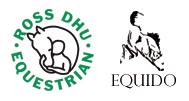Horses tend to be accident-prone, and have an amazing ability to injure themselves on virtually anything! How many times, have you asked yourself, “how did that happen”?! Whatever the type, severity or cause, understanding more about how wounds heal will help you ensure your horse’s injury has the best chance of repairing as quickly and neatly as possible.
There are many different wounds that your horse can sustain, with the most common being lacerations, puncture wounds and incised wounds. Other types include grazes, bruises, haematomas, contusions, complicated wounds and burns. To help we’ve briefly explained each type of wound below, but if you are in any doubt you should talk to your vet for a proper diagnosis and care program.
- Lacerations – when the skin is torn in an uncontrolled direction and are usually caused by blunt objects. A common cause of lacerations is getting caught in wire
- Puncture wounds – when a hole is created in the body by a sharp object. A thorn penetrating the skin or treading on a nail are two common causes
- Incised wounds – cuts with clean, straight edges, similar to a surgical wound, and are usually caused by sharp objects such as metal, glass or flint
- Grazes – small, superficial wounds that only affect the top layer of skin. They’re caused by abrasion from a rough, hard surface such as concrete
- Bruises – when tiny blood vessels are damaged, resulting in bleeding. They cause skin discolouration, but the skin is intact. Bruises are caused by a blow to the body or standing on something
- Haematomas – swellings caused by a large volume of blood accumulating under the skin. Similar to bruising, they’re caused by a blow to the body, but often with more force
- Contusions are severe bruising with damage to the skin – when a horse has been kicked and the hair and top layer of skin removed
- Burns – often affect the top layers of skin, but in severe cases can extend to the structures below. They can be caused by heat, extreme cold, friction, chemicals, hot water or strong sunlight
- More serious wounds – include any type of wound that involves other structures as well as the skin, such as joints, tendons, eyes, or the chest or abdominal cavities being damaged
Once you know the severity of your horses wound, it is important to understand how it heals, so that you can monitor the wound for sign of infection or further damage. There are three processes, which can happen at the same time, these are;
- Inflammatory stage – Inflammation is the body’s initial response to a wound and it brings immune system cells to the area to start cleaning up. This produces a thick discharge. Debridement means the removal of dead or damaged tissues. This phase may last up to five days.
- Repair phase – your horse will naturally start to repair his own body, with tissue lost being replaced. You should start to see signs of tissue repair within 24 hours. Your horse’s overall well-being and health, will influence this stage of healing. The new tissue is quite weak until 5–15 days post injury, when it becomes much stronger. SO it is important not to allow this to be damaged again during healing.
- Top layer of skin renewal – this is called epithelialisation, and it is a very slow process – at best the new cells can migrate 1.5 mm in 10 days. As the new area of skin forms, the blood supply behind the healing edge decreases and the cells shrink and become more densely packed together, forming a scar. This process is called contraction. Contraction contributes to the reduction in size of a healing wound by reducing the area needing to be covered by epithelialisation. Wounds can’t heal without producing some scarring, however massaging the scar tissue using aqueous cream may help to reduce the final size of the scar. Wound contraction continues for months after the wound has closed over.
What else can you do to help?
Depending on the size of the wound and its severity, determines how much tissue has been damaged and generally who long it will take to heal. However, there are other thing that you can do to help your horse heal more quickly. These include;
- Thoroughly cleaning and flushing the wound at an early stage, and by giving antibiotics when infection is present.
- Keep the area as still as possible. This is why vets often recommend box rest for a horse with a wound.
- Stitching or stapling, which your vet may recommend helps to relieve pain and distress, and achieve a functional, cosmetic repair in as short a time as possible.
If you’re in any doubt, call your vet for advice – these days, photos are easily sent to your vet from a mobile phone. Make sure that any photos you send are in focus and clearly show where the wound is.
As always, if you are in any doubt about any of our top tips for keeping your horse healthy and save over the winter period. Then please do drop us an email on contact@scottishhorsehelp.com or call Morag on 01698 886 492 and we will be more than happy to provide advice and guidance.
